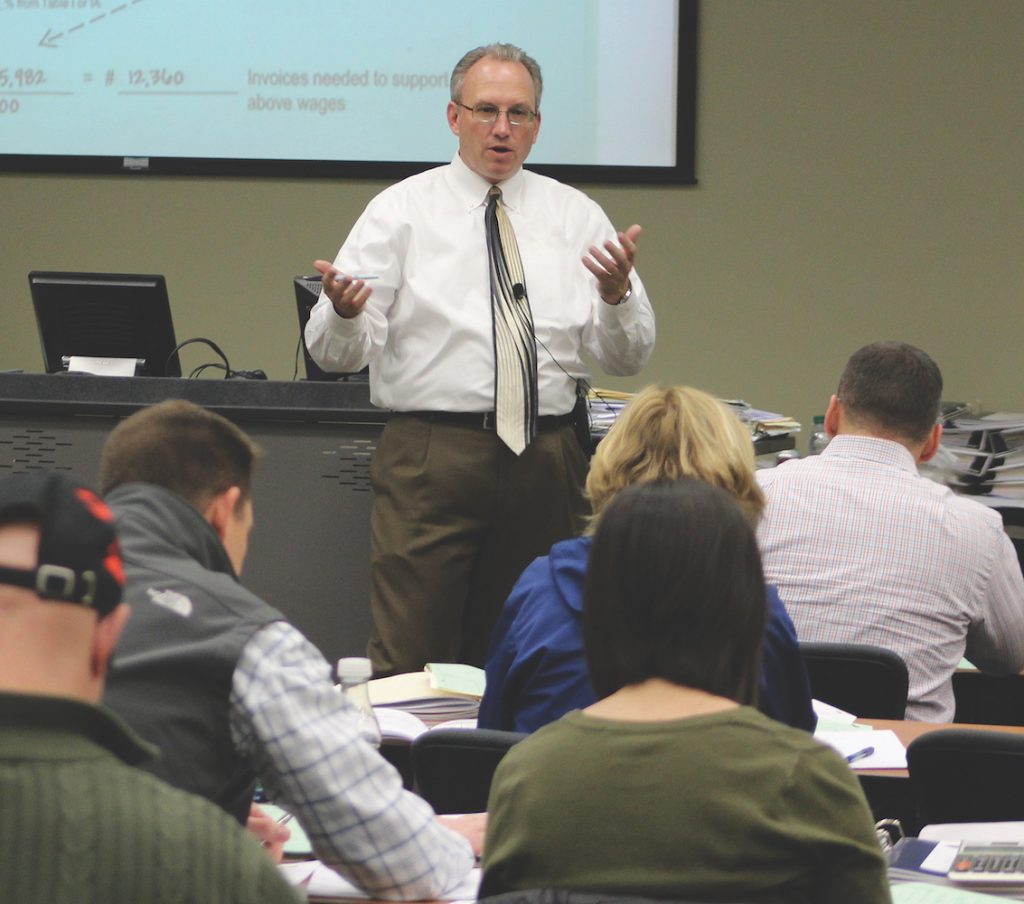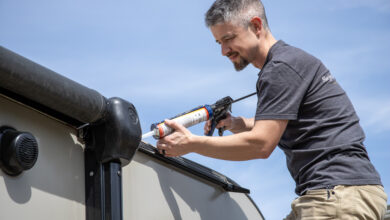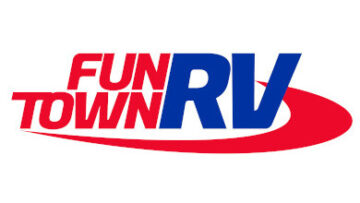Dealers Share the Benefits to Joining a 20 Group
No one will tell you running an RV dealership is easy. Unlike some other businesses, it can require major investments in inventory, facilities and employees. There are reams of government forms required with each sale. And, swings within the economy can quickly turn profit into loss. And while industry associations offer some educational assistance, when it comes to the nuts and bolts of operating a dealership on a daily basis, getting industry-specific and nuanced advice isn’t an easy thing to come by.
That is, unless you are a dealer principal or general manager who has opted to join a group of peers in one of the 20 Groups that have served the industry for almost a half century.
Sound too good to be true?
Well, it does come at a price – in dollars, time, and the willingness to be totally honest and upfront with information not everyone is comfortable sharing.
‘You’re Naked’
If anything, it’s that sharing that may keep more dealers from belonging to 20 Groups. Or, to put it another way, they may understand too well what’s expected in participating in such a group.
John Spader, a principal in Sioux Falls, S.D.-based Spader Business Management, says he believes most dealers in the RV industry have an idea of what a 20 Group is, or at least an awareness of the concept.
Says Chuck Marzahn, a partner in Virginia Beach, Va.-based Marzahn and King, “These kinds of groups are fairly common. They have them in the car business, in the motorcycle business, in the boat business. It’s a fairly common practice these days.”
“The biggest thing with 20 Groups and the reason more people aren’t in them or don’t belong is that they aren’t for everyone,” Spader says. “You have to be all in there. You’re naked; there are no secrets – and if you try and hide them, the group will dig them out really quick.
“Not everyone works well in that environment,” he adds.
What they need to be thinking about, says Marzahn, is that all the members of a group have skin in the game.
“The group members can give advice, counsel, mentoring, but it only works where there’s a spirit of trust,” he says. “That’s why all the 20 Group providers make certain that members in a group are from non-competing areas, so they aren’t working for or against their competition.”
Spader compares the relationship to a teeter-totter.
“A 20 Group is about giving and getting,” he says. “There will be periods where you give a lot and don’t get as much, and other periods where you’re the one who gets more than you give. Some of the strongest dealers today were almost out of business 10 years ago. Rarely is the teeter-totter perfectly in balance.”
The other thing some dealers may not think about is membership in a 20 Group gives them plenty of real numbers that not only provide a snapshot of how each dealership is doing, but help set benchmarks for performance and allow each dealer to compare his or her performance against other group members.
Although each company that provides moderator services to 20 Groups presents group data in slightly different ways, the main goal is to present numbers that are easy to understand
and lead members to ask questions of themselves and others. Marzahn is typical.
“We put your numbers into a composite with everybody else’s, and you have to realize these are 60 to 70 pages long,” he says. “We also do a study dashboard that’s four pages of graphic information that helps a member look at what areas of the store are shown to be weaker than others.”
Often, it’s also numbers that aren’t available to other people in the industry, and a good way to identify trends as they’re beginning, according to Lee Berryman, owner of Daytona Beach, Fla.-based RV Profit Group.
“Out in the industry, no one collects this data,” he says. “There are things we get into that no one has even thought of measuring. We develop benchmarks when anecdotal information doesn’t cut it.”
Not-So-Magic Number
How they present their numbers is only one way these companies differ from each other. One thing they do agree on, though, is that the name 20 Group is something of a misnomer.
Coined by Nichols, Campbell & Morrow (now NCM Associates) when it originated the idea for the automotive industry in 1947, it suggests a copacetic gathering of 20 people. However, the moderators working in the RV industry say 20 is just a few too many.
“Anything more than 20 is not manageable,” says Jan Kelly, owner of Vancouver, Wash.-based Kelly Enterprises. “Generally speaking, my groups are anywhere from 11 to 16. If you have more than 20 you have people who don’t get their opinions talked about or they don’t get recognized.”
“Fifteen seems about right,” says RV Profit Group’s Berryman. “Some of them will bring a son or a partner, so you may end up with 22 anyway. I have one group that’s at 19, and that’s too many. I would prefer to have 12 to 15.”
Although these business owners are loath to discuss how many clients they have in 20 Groups or the costs of their services, they do stress that there’s likely a group that will be a good fit for just about anyone’s needs.
No one is quite as specialized as Kelly, who has more than 40 years in the finance arena and aims both her consulting services and her 20 Groups to a dealership’s F&I executives.
“Finance is often a department of one,” she says. “There are few people in a dealership who know what goes on in a finance office, but they do know their paperwork problems start there. By being in a 20 Group, if they have a question, they can not only ask me, but they can send a group email and get 10 to 20 answers because there’s no one in the dealership they can turn to.”
She’s quick to stress that each group is made up of people in different parts of the country, so they’re not competing against each other, a point the other moderators constantly reiterate.
That’s not to say that these other groups don’t offer something for the F&I department. Berryman, for instance, says it’s not uncommon to have break-out sessions from his dealer groups where the F&I manager or the service manager may be brought in to focus on a particular issue.
“We have a separate agenda, a separate day and they all participate,” he says.
Service managers and dealerships that offer rentals also may have their own groups, depending on the consulting company.
Beyond that, Spader Business Management’s Spader says there’s a 20 Group for just about every type of dealership.
“We have six, maybe eight different formats,” he says. “We have ones for dealers who have large multi-store operations, and ones for owners of smaller, single stores. We have groups for operations that are family-owned. We have groups where almost all of the dealerships are being taken over by the owners’ children, and they have similar issues.”

John Spader with Spader Business Management shares best business practices related to running an RV dealership with dealership personnel during a training class.
Similar … But Different
One area where the companies differ is in the long-term makeup of the groups they moderate. For some, the group relationships are longstanding; for others, not so much.
Marzahn and King’s Marzahn says that, with his groups, it’s rare for the membership to change.
“It happens, but it’s not common,” he says. “They become familiar with and comfortable with one another, and they don’t want to leave.”
Spader’s groups are a bit more fluid.
“It used to be – if you go back 20 years – if we put a 20 Group together, you could set the cruise control for 10 years because they had similar needs and similar sizes,” he says. “Now, just about every three years you have to look at a group because there’s so much evolution and change going on that the needs are changing among the members.”
Perhaps an even bigger difference is how the meetings are conducted. Since the concept of 20 Groups dates to the 1940s, it’s perhaps not surprising that the traditional method for conducting a meeting is to gather all the members in a central location three or four times a year for what’s generally a two-day session.
It’s a template that both Spader and Berryman still follow, even if the data is now presented electronically, rather than in large notebooks. However, both Marzahn and King and Kelly Enterprises have adapted to make use of today’s technology.
“We only meet face-to-face once a year,” says Kelly. “We used to meet twice a year, and then 2008 happened and dealers said they couldn’t afford that, so we got down to once a year. However, for the other 11 months, we have an hour conference call.”
And, while one hour once a month might not seem like a lot, Kelly says that’s supplemented by calls to her and to other members in the group. Like Kelly, Marzahn says web conference software allows his groups to meet monthly, although some have two face-to-face sessions during the year, some have one, and others just meet virtually.
“Everything in business these days happens more quickly,” he says. “We deliver our numbers virtually, and we’re working off last-month’s figures, rather than having them lag by two or three months. And, if we’re scheduled to meet Tuesday and somebody can’t make it, we can send a message out to the group and see if we can meet on Wednesday, instead.”
Finding the Right Fit
Along with regular meetings – virtual or in-person – one of the things most of the companies offer is access to still more help if it’s needed. Group moderators do consulting, give seminars and provide additional materials for dealerships that are dealing with a specific issue that might not fit the scope of a 20 Group session.
Kelly, for instance, says if a dealer calls and says help is needed, she typically begins with an onsite visit.
“I can sit there and look at deals and walk through the store and get a feel for what’s going on,” she says. “And, then I get in a room with the finance people, and I can teach them the skills they need with a customer. But, in the F&I 20 Group we’re comparing their production to others. They can’t say, ‘My guy is different.’ They realize maybe they’re not getting to see the customer and getting involved in the deal.”
As for when it might be time to think about joining a 20 Group, Marzahn says his first response is there are 12 months in a year.
“Seriously, I don’t know that there’s a particular time,” he says. “In the life of a dealership, there are certain stress points that might drive that. Frequently, it comes down to the fact that the dealer could use some help on something, someone to talk to, someone to look over his shoulder.”
And, he adds, “The membership is less than having a couple of consulting days.”
Spader says that sometimes it’s a dealer who has a very specific need in mind.
“I had a guy call the other day who said, ‘I’ve been good at running one store for years. I know my store, but now we’re going to buy a second store, and perhaps a third store, and I have no clue. Do you have a 20 Group for multi-store guys so I can learn how to do this?’” Spader says.
For someone who makes that sort of call, these moderators will try to find an existing group in which they’ll fit both in terms of dealership(s) and geographically. A dealer is then encouraged to attend a meeting, observing only and following the organization’s rules of confidentiality.
Sometimes the first group isn’t a good fit – either for the dealer or for the existing members, who get to vote on adding a new person. And, Marzahn says that occasionally a new person can be a hard sell.
“If there’s something funny in your reputation in the industry, you’re not likely to find a group,” he says. “One of the things that’s absolute is the group has to operate in a spirit of trust, and if there’s someone whose reputation is less-than-sterling, they might have a little difficulty.”
Other things Marzahn says are important include making sure the person is actively involved in the business, and who has a depth of expertise that they can actively contribute once they are in.
Even then, joining a 20 Group isn’t a silver bullet that will magically make problems disappear. But it can be a start, according to Spader.
“Part of it depends on where the dealer is starting from and how open they are to change,” he says. “Most people, after the first meeting, go home with reams and reams and reams of notes and lists of what they’re going to change. So, from that you can see results from the first meeting.”
Being open to change is probably the key to true success with a 20 Group – and recognizing that you may not be the smartest person in the room, according to Kelly.
“I tell them they need to participate with an open mind, and if they can do that, we might have some success,” she says. “For those who have an open mind and just try one little thing, it can make a huge difference. As soon as they have success with that one thing, they come back for more.”



